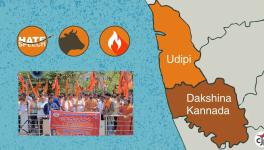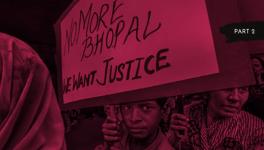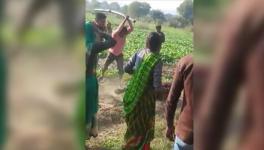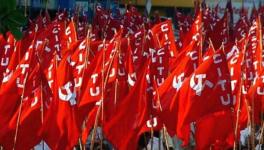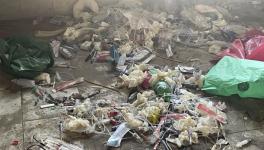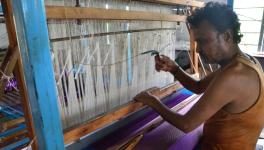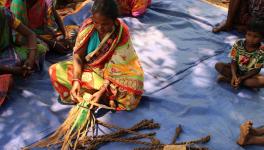COVID-19: Increasing Cases Reported Among Vulnerable Tribal Communities in Central India
File Photo.
As the second wave of COVID-19 wreaks havoc in urban cities, infections are reportedly increasing across vulnerable tribal belts in several states in central and southern India, including Odisha, Karnataka, Madhya Pradesh and Gujarat.
Tribal people account for around 370 million people in 70 countries around the world and make up 8.2% of the population in India.
According to tribal rights activists, the government has failed to check the invasion of the virus into the tribal communities in the central Indian states in the absence of specific protocols to tackle its spread.
Despite their relative isolation, members of many tribal groups in central India have reportedly tested positive for COVID-19. The surge in infections in closed communities is being attributed to the movement of outsiders and contact spreading through local markets among other reasons. However, what makes the spread more worrisome are the nutritional and health discrepancies among the communities, increasing distrust of government policies including vaccination and limited access to healthcare system, making infectious diseases specially COVID-19 deadlier among these groups.
Speaking to NewsClick about it, Rajaram Sunderesan, a researcher based in Odisha associated with tribal studies explained the crisis, “The Odisha Government’s COVID-19 management practices were at one point being hailed by everyone but, on the contrary, the truth is that this government is clueless about tackling the spread of the virus when it comes to adivasi areas. Odisha has one of the largest number of tribal communities in the country, but the government till now has not come up with any prescribed guidelines on tackling the situation on the ground.”
He said, “Historically, it is well known that the state health agencies, including primary and community health centres, have treated people from adivasi communities with utmost disrespect and indignity. The government desperately needs to decentralise its COVID-19 management process. It also needs to understand that the idea of home isolation will not work within adivasi communities. This is because the notion of privacy is very different within adivasi cultures.”
“The government must open its eyes and ears to the requirements of these communities or the situation will descend into crisis like the 16th century epidemics that wiped out whole adivasi communities,” Sunderasan added.
In Maharashtra’s Palghar, tribals from Kunbi, Bhandari and Warli communities are battling a grave shortage of ICU beds and medicines as anxieties soar about the spread of community infection.
Also read: Why India’s Health Care Systems Fail to Provide for Marginalised Citizens
On the other hand, several tribal hamlets in Karnataka's Mysuru and Kodagu region have reported a surge in infections. At least 15 tribals belonging to the Soliga community have contracted the infection over the past week. Cases have been reported from the traditional honey gathering Jenu Kuruba tribe as well.
Gujarat’s Bhil tribal group has also reported cases of fatal infection in the villages surrounding the Statue of Unity. However, lack of testing and data collection, and suppression of information in these areas has reportedly led to fragmented information about COVID-19 related deaths among the community.
Confirming community infection and casualties, Chhotubhai Vasava, a tribal leader from Gujarat, said, “There is no model for the treatment of the adivasis amid the pandemic. In addition to many cases in the remote belts of Dahoud and Panchamal, in the area surrounding the Statue of Unity, over 34 COVID-19 related deaths of Bhils have also been reported. However, only 9-10 deaths were recorded as major cases were unaccounted for. In remote tribal regions, the communities have locked their areas from outside contact to minimise the spread of infection. This is being done by the communities themselves as the state government has failed to address the issues of the tribal communities.”
Further, the COVID-19 crisis has also fuelled suspicions and anxieties among tribal communities contributing to reluctance and fears regarding the vaccination process, as per reports. Meanwhile, the Centre and the state governments have initiated vaccination, but distrust towards government machinery remains strong, Vasava added.
Highlighting the situation in tribal belts of Burhanpur region in Madhya Pradesh, Madhuri Krishnaswamy of the Jagrit Adivasi Dalit Sangathan, said, “There are huge fever surges, sometimes pneumonia like symptoms. Compared to the urban areas, the symptoms among the tribals in remote areas are mild and moderate.”
Commenting on the doubts surrounding vaccination and so on, she added, “On the other hand, there is the question of vaccination. People on the ground do not fear COVID-19 as much as the alleged cases of post-vaccination deaths. Many are viewing this as an attack by the government on the poor, especially as last year even the mildly symptomatic were whisked off to COVID-19 centres against their will. Also there has been no attempt made by the government to disseminate information about the vaccines and the people who are at potential risk from the vaccine.”
Get the latest reports & analysis with people's perspective on Protests, movements & deep analytical videos, discussions of the current affairs in your Telegram app. Subscribe to NewsClick's Telegram channel & get Real-Time updates on stories, as they get published on our website.









